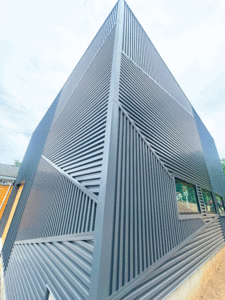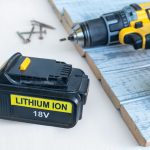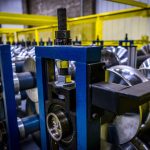
Metal wall panels are not necessarily new. However, each year, more architects choose metal panels to impart a visually interesting look across a project’s facade. Further, metal wall panels can be affixed to exteriors as a non-structural element that provides durable protection across a building, increasing the longevity of a project by up to 50 years in the right conditions. Longer-lasting buildings are not only more cost-efficient but also more sustainable since they reduce the environmental impact of routine maintenance, repair, and rebuilding. In addition, whether made from a high-quality aluminum or steel substrate, metal wall panels often contain a high percentage of recycled materials, which can contribute to LEED certification.
With this slew of benefits, it is not surprising that more architecture firms are incorporating metal wall panels into their designs. In fact, research shows that steel siding’s market worth is expected to grow to $9.86 billion by 2028, according to the 2023 Global Steel Siding Market Research Report. Given that steel siding is just one option for this type of construction, metal wall paneling is set to represent a large swath of potential revenue for contractors. This means it is important for construction professionals to not only know the capabilities of metal panels but also understand how to utilize the various design and material options to maximize the value they can deliver.
A range of design aesthetics
Metal wall panels are a versatile choice for facades. Select metal wall panel manufacturers can deliver more than 40 standard colors. Additionally, when these manufacturers have close working relationships with finish and coating developers, they can offer custom colors that provide the same level of substrate protection.
However, a variety of color options is not the only thing that sets metal panels apart from other facade treatments. They are also available with several rib shapes—from flush panels to board-and-batten siding. Whether one or multiple options are chosen, these rib profiles can be installed horizontally, vertically, or diagonally to deliver a statement-making look across a facade.
Metal wall panels made from high-quality steel or aluminum can be incorporated into many projects—even those in close proximity to salt and brackish waters. Their corrosion-resistant qualities not only open more potential job prospects but also increase a contractor’s value in all phases of construction.
Streamlining logistics and timelines
In addition to offering a wide range of design aesthetics, metal wall panels can help project teams save on labor costs and contribute to reduced construction times. For example, panels can be fabricated and cut to size at a manufacturing plant and shipped to the project site. This eliminates the need for most in-field cutting and resizing, improving labor costs and installation timelines.
Further, select national manufacturers have a network of plants across the U.S. and are well versed in shipping panels safely. This not only saves on logistics costs but also reduces the potential of unforeseen delays caused by damaged panels.
Representing more labor-saving potential, metal wall panels can be installed in interlocking arrangements and with simple fastening practices. This ease of installation sidelines the need to bring in additional construction teams, which translates to faster timelines and reduced labor costs. Even so, it is still important to work closely with manufacturers to ensure proper installation and to reduce the potential for error along difficult areas—like corners and trim. Doing so will help contractors maximize the value metal wall panels contribute to facade design.
Integrating metal paneling seamlessly
The benefits of metal wall panels extend beyond creating beautiful and long-lasting facades. They also support contractors’ ability to get and complete projects faster and with fewer associated costs. However, integrating metal panel construction seamlessly into a contractor’s toolbox is not without its challenges.
First, it is important for contractors to recognize that not all manufacturers are the same. Choosing panel fabricators that offer a network of plants across the country can help reduce shipping costs and minimize wait times if replacements are necessary. In addition, when manufacturers offer leading finish warranties, contractors can have peace of mind that their work will provide long-lasting facade protection that will not fade in vibrancy.
Second, the specific details of a project may require different considerations for installation. For example, panels that are longer in length often require clips to ensure they are properly affixed to a building’s exterior. Likewise, panel size and thickness, as well as unique project specifications, may require different penetrations and fastening systems. Trim details can also significantly affect both the look and the performance of metal panel systems. For all these reasons, contractors that choose manufacturers with a dedicated support team and a wide range of training and educational programs can more easily deliver the most value possible to customers while reducing challenges and reworks during installation.
Manufacturer support
While more designers are turning to metal wall panels to achieve aesthetically pleasing facade protection, contractors can turn to manufacturers with a proven track record to maximize the value these systems deliver to construction sites. This includes companies with industry-leading warranties, a cross-country network of manufacturing plants, and a wealth of resources and experts to help solve project-specific challenges.
When contractors choose the right metal wall panel manufacturer they can realize the full potential of these architectural systems for a building’s future occupants and for the contractors’ own bottom lines.
Brian McLaughlin is a graduate of Temple University and has been involved in the metal roofing industry for more than 15 years. In his current role, McLaughlin serves as the director of sales for Drexel Metals, a Carlisle Company. He has held many positions within Drexel Metals and has grown within the company and the industry as a leading expert in metal. For more information, visit drexmet.com/contact-us/.





